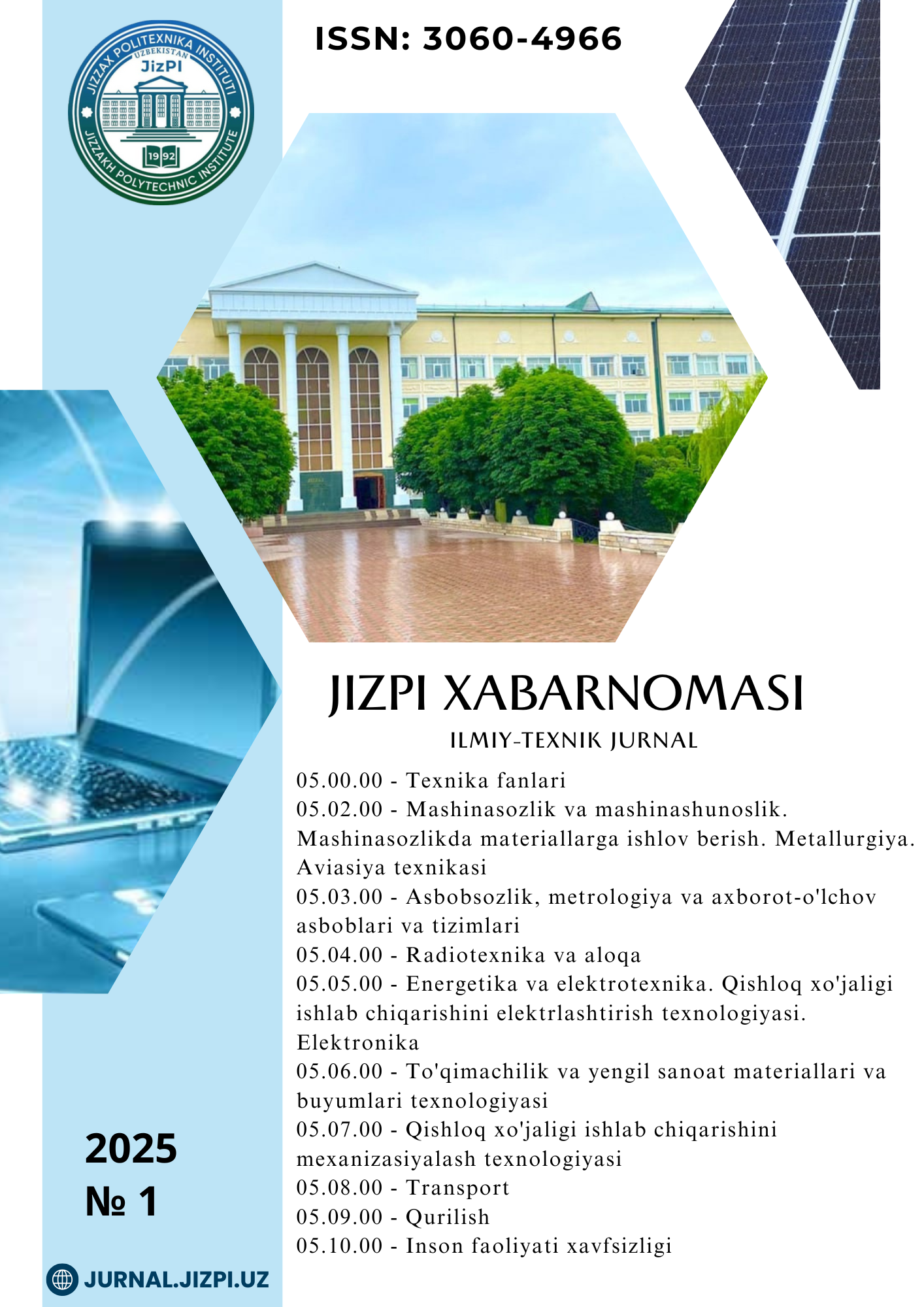METHODOLOGY FOR ESTIMATING PARTICLE EMISSIONS FROM CAR BRAKE PAD CORROSION BASED ON VARIATIONS IN ROAD COHESION CO-EFFICIENT
Keywords:
automobile wheels, tire, traffic safety, road dust, metal emissionsAbstract
This article describes Determining methods of metal emissions in the composition of small particles coming by brake mechanisms details and tire wear as a result of vehicle movement, and dust to be formed by comparative analysis on asphalt-concrete roads of different compositions. A significant contributor to particulate matter in cities is traffic-related sources. Traffic-related particles can be divided into: exhaust particles released by the incomplete combustion of fuel and the volatilization of lubricants during combustion and formed by brake mechanism parts, tire wear and road surface wear, and accumulated due to turbulence caused by road traffic. In the method of determining the metal concentration in the formed particles, information on the Physico-chemical properties of the particles is given. Metals in road dust are increasingly being studied and this is primarily in climate action. In this research, road dust particles formed on the surfaces of asphalt-concrete roads with different compositions in the Jizzakh region were studied. Based on this, the developed research methodology made it possible to comprehensively evaluate the distribution and size of particles generated as a result of car acceleration, constant speed movement and car braking
References
1. S.V.Samoyilov, U.B.Abdujalilov, L.A.Aksinova va boshq. O’zbeliston Respublikasida atrof-muhit holati va tabiiy manbalardan foydalanish to’g’risidagi Milliy ma’ruza / - Toshkent: Chinor ENK, 2009. - 288 b.
2. ETRMA (2014). Evaluation of air-borne tyre and road wear particles (TRWP). Presentation to UNECE PMP IWG, 7-10 January 2014, Geneva, Switzer-land
3. Gualtieri, M., Mantecca, P., Cetta, F. and Camatini, M. (2008). Organic com-pounds in tire particle induce reactive oxy-gen species and heat-shock proteins in the human alveolar cell line A549. Environ-ment International 34:437–442 air.sk/tno/cepmeip/(retrieved 31.01.14)
4. Chan, D. and Stachowiak, G.W. (2004). Review of automotive brake fric-tion materials. Proceedings of the Institu-tion of Mechanical Engineers, Part D: Journal of Automobile Engineering 218:953-966
5. Fauser, P. (1999). Particulate Air Pollution with Emphasis on Traffic Gener-ated Aerosols. Thesis. Riso National La-boratory, Technical University of Denmark, Roskilde
6. 6. Duong, T.T. and Lee, B.K. (2011). Determining contamination level of heavy metals in road dust from busy traffic areas with different characteristics. Journal of Environmental Management 92:554-562
7. Adachi, K. and Tainosho, A. (2004). Characterization of heavy metal particles embedded in tire dust. Environ-mental International 30:1009-1017
8. Kittelson 1998; Burtscher 2005; Maricq 2007; Ali va Athar 2008; Beelen va boshq. 2008; Biswas va boshq. 2009; Walsh 2011)
9. Ismayilov, K., & Karimova, K. (2020). Application of used automobile tires granules for road construction in Uz-bekistan. Journal of Critical Re-views, 7(12), 946-948.
10. Alimova, Z. X., Kholikova, N. A., Kholova, S. O., & Karimova, K. G. (2021, October). Influence of the antioxidant properties of lubricants on the wear of ag-ricultural machinery parts. In IOP Confer-ence Series: Earth and Environmental Sci-ence (Vol. 868, No. 1, p. 012037). IOP Publishing.


